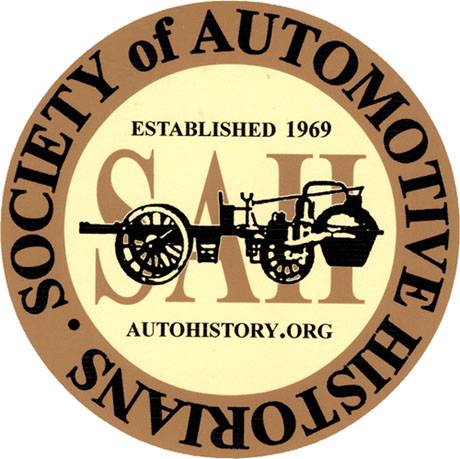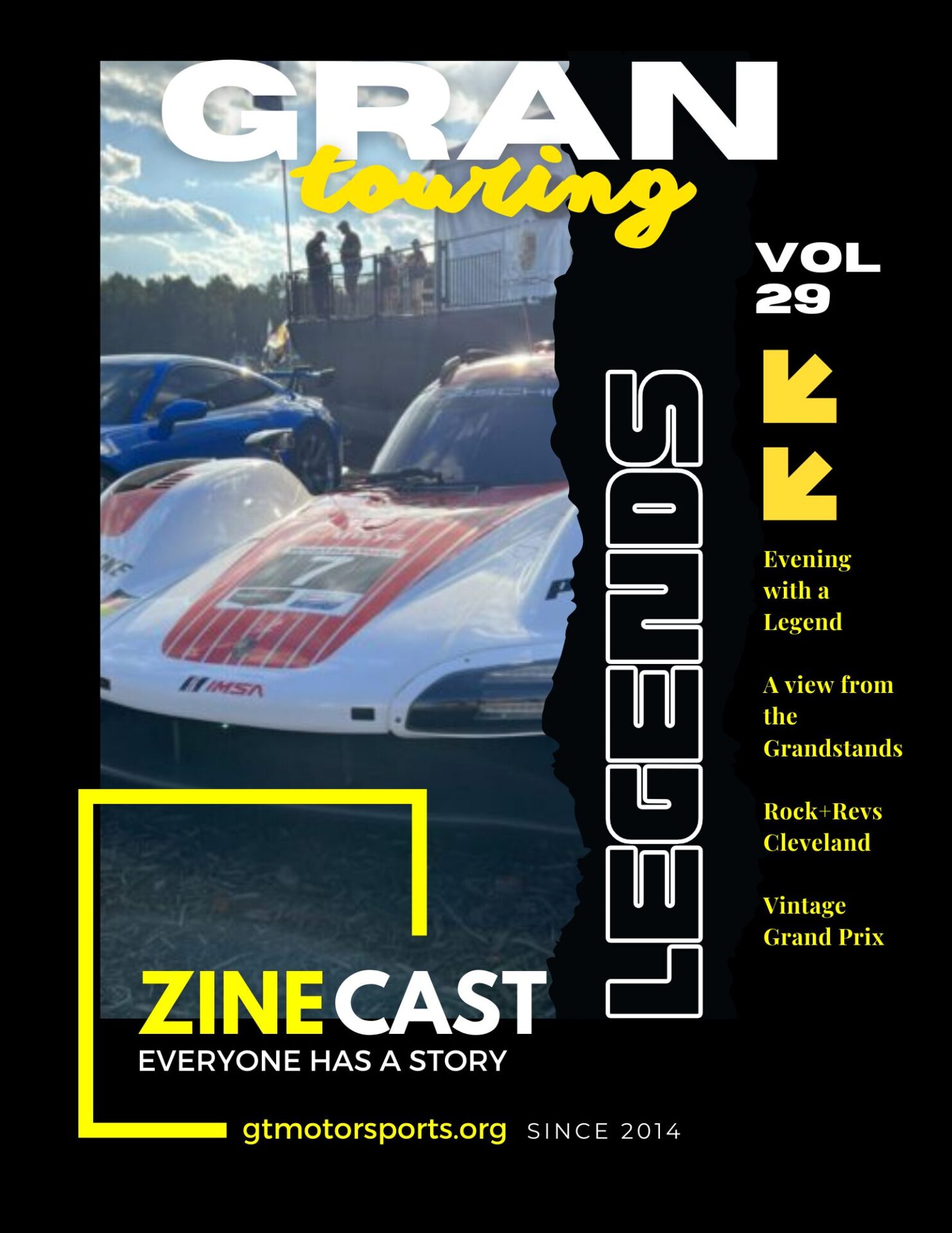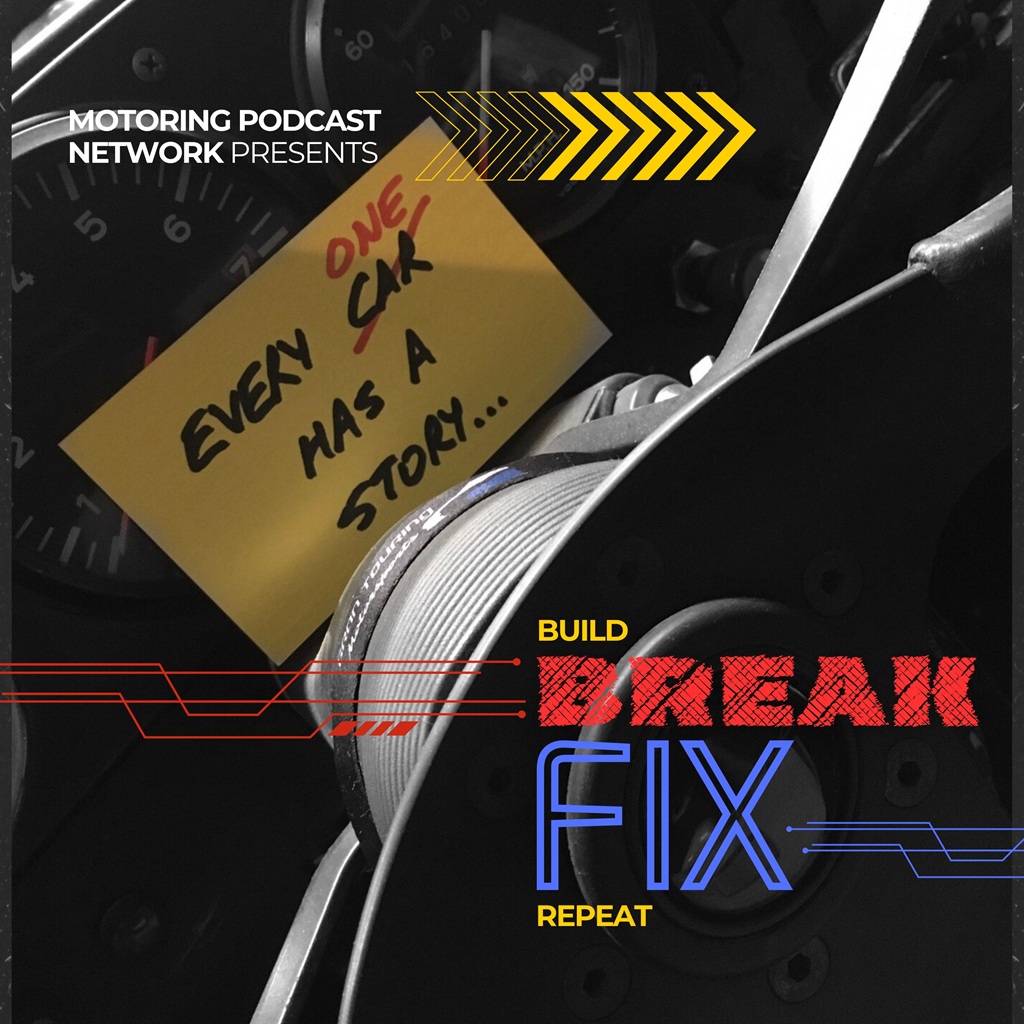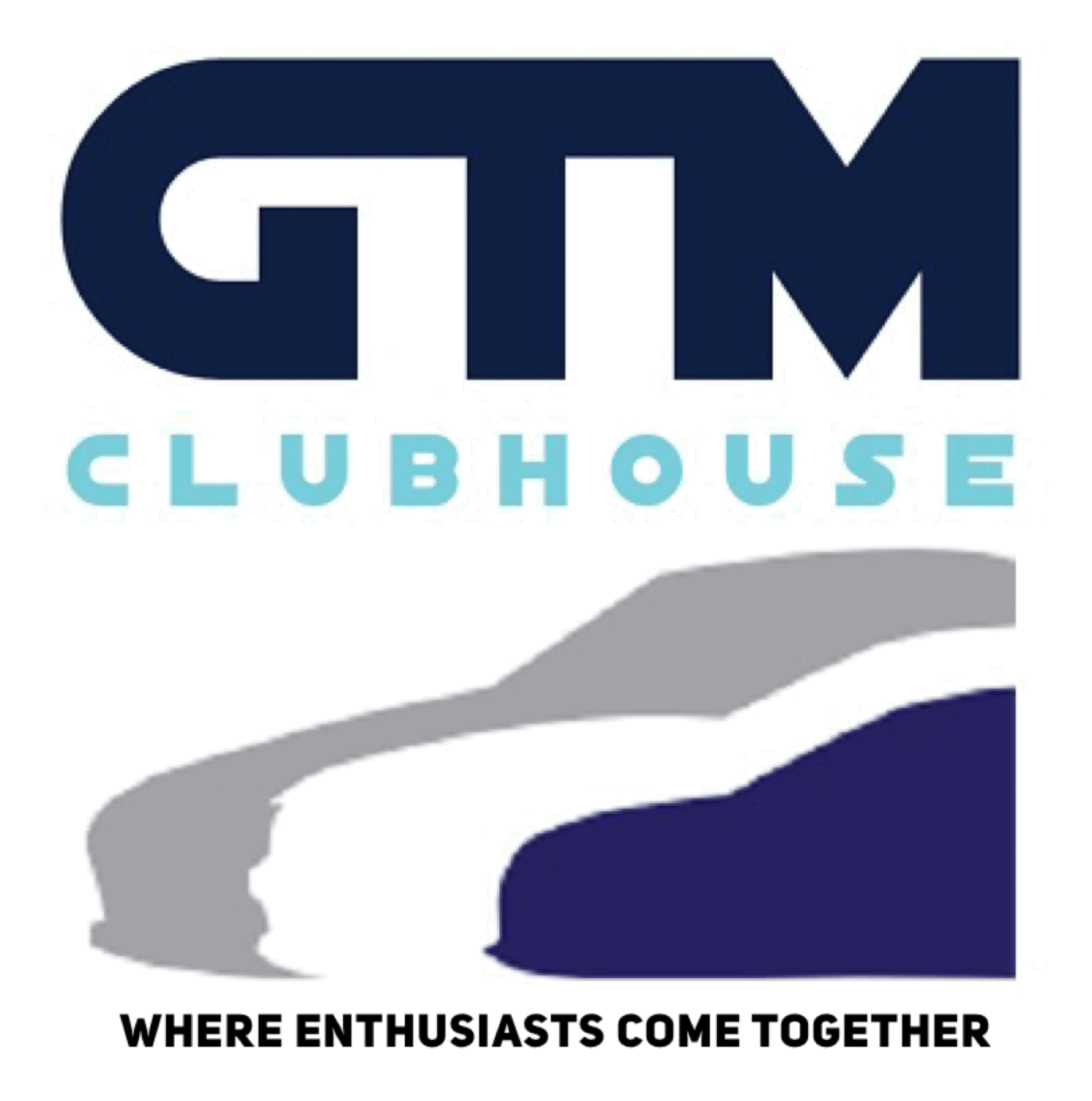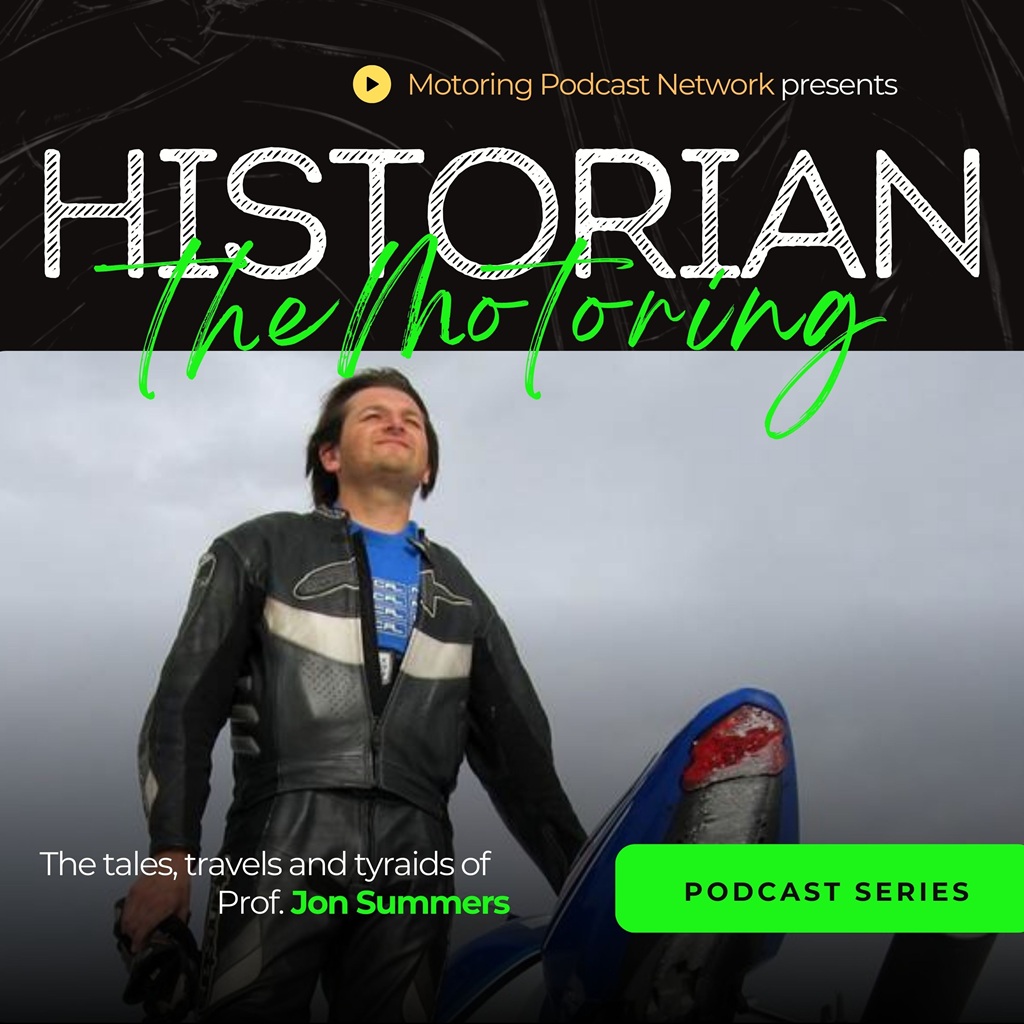Karl Mertins presents a “what if” story: what if Robert Eberan von Eberhorst in 1953 would have joined the newly formed Unione Automobili instead of an Auto Union that was only a shadow of its former self? What if Francesco De Virgilio and Ettore Zaccone Mina had been tasked with designing a compact V6 engine for the 2.5-liter GP formula that could take on a rather conventional Mercedes W196? What if Josef Mickl’s aerodynamic knowledge would have been applied to create downforce? Would lessons learned from pre-war Silver Arrows and the untimely Cisitalia Grand Prix project, when blended with elements of Lancia’s passionate engineering culture, have accelerated the rear-engine revolution in F1?
Tune in everywhere you stream, download or listen!
 |  |  |
- Bio
- Notes
- Transcript
- Livestream
- Learn More
Bio
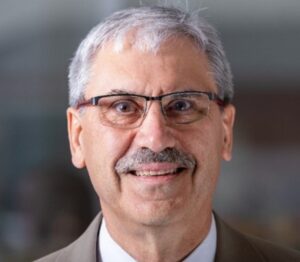
Dr. Karl-Heinz Mertins holds a master’s degree in mechanical engineering and a doctorate degree in mechatronics/ag engineering from the Technical University Berlin, Germany. He has over 35 years of engineering and business experience in Europe and the United States, with focus on product innovation and new business incubation, using cross-disciplinary methods and cross-cultural sensitivities. His work includes experimental work on intelligent mobile equipment and wind energy systems at the Corporate Engineering Division of Deere & Company. His enthusiasm for F1 began in the year 1961.
Notes
Transcript
[00:00:00] Brake Fix’s History of Motorsports series is brought to you in part by the International Motor Racing Research Center, as well as the Society of Automotive Historians, the Watkins Glen Area Chamber of Commerce, and the Argettsinger family.
Argento e Ebroso, an alternative story of the mid engine revolution by Carl Heinz Mertens. Dr. Karl Heinz Mertens holds a master’s degree in mechanical engineering and a doctorate degree in engineering from the Technical University in Berlin, Germany. He has over 35 years of engineering and business experience in Europe and the United States with focus on product innovation and new business incubation using cross disciplinary methods and cross cultural sensitivities.
His work includes experiments on intelligent mobile equipment and wind energy systems at the corporate engineering division of Deere and Company. His enthusiasm for Formula One began in 1961. Mertens presents a what if story. What if Robert Eberin von Eberhorst in 1953 would have joined the newly formed [00:01:00] Unione Automobili instead of the Auto Union that was only a shadow of its former self?
What if Francesco Di Virgilio and Ettore Zacconamina had been tasked with designing a compact V6 engine for the 2. 5L GP Formula that would take on the rather conventional Mercedes W186? Eberin What if Joseph Michel’s aerodynamic knowledge would have been applied to create downforce? Would lessons learned from pre war silver arrows and the untimely Sistalia Grand Prix project, when blended with elements of Lancia’s passionate engineering culture, have accelerated rear engine revolution in Formula One?
Our next presentation is, I love, I get to say this, I get to use some of my Italian. Argento e Rosto, An Alternate History of the Min Engine Revolution, by Carl Heinz Mertens. I love this topic. This is one of those things, thinking out of contrafactual history, is something that’s being used a lot now to examine different events in history.
I’m looking forward to this one. Thank you. Did it really need to take [00:02:00] 25 years from the first cars that were winning Grand Prix races with the engine mounted behind the driver until it became commonplace and then all the U. S. Grand Prix’s that were held here at this wonderful racetrack were all Contested by and won by cars that had the engine mounted behind the driver.
It seemed to be the most normal thing in the world. So, let me run you through a few stages of what happened in reality, and then I will veer off into what I would submit as an alternative reality. And you can dispute that, and you can criticize me for some of the stupidities that I will throw out here.
But it’s something that I’ve been thinking about for a long time. And now in retirement, I’ve had time to really devote some quality time to this topic. And I want to share this with you, but I invite you to be critical with me. I start here at the year [00:03:00] 1937, and this is just one of the races that we’re counting towards the European Championship of Drivers.
And what you see here is the typical view in those years. There are many silver cars, and they have just a sprinkle of red. There’s a lot of Argento, a little sprinkle of Rosso in this image. The lone Alfa Romeo here of Tassio Nuvolari. In the pole position here is Bernd Rosemeyer in an Auto Union. As you may deduct here, the engine is really mounted behind the driver.
Whereas all the Mercedes cars in the vicinity here, Herman Lang, Caracciola here, they all have the typical, classical front engined cars, just like the Thomas Flyer engine mounted in front of the person that drives the car, or the two people that were sitting there. That seemed to be the norm. Why [00:04:00] even question that?
And yet we know from many Instances in industry in art and so on things change and sometimes they have to change for good reasons But the underlying situation here. I want to point out quickly was that this happened all under the 750 kilogram formula that the CSI brought into action because the previous cars were getting too fast and too powerful.
Thought was, well, if you limit the drive weight of the car to 750 kilograms, then not much can happen. The engines will have to become smaller and there is just no chance for increase in performance and perhaps a decrease in safety of running these cars on the given tracks. The opposite happened. Rule makers did not really anticipate the tremendous progress that happened in metallurgy, in engineering in general, in tires, in many areas that [00:05:00] compose the car.
What happened was the technical complexity went up dramatically, the performance of these cars compared to the previous ones went up dramatically, and the dominance of that was held by the red cars, the Rosso element, switched over to the Agenta, to the silver cars, the ones that happened to be made in Germany, where I also come from.
And as you see in the results here, the first three finishers were silver cars, Mercedes in the first two places, Auto Union number three, and Pazio several minutes distance came in as fourth. Two years prior, by the way, he had won this race because this man, von Bauchitsch, was abusing his tires and he didn’t want to stop for a second tire change and he paid heavily for that and Nuvolari was the surprise winner.
The organizers were not prepared to have a foreigner win the German Grand [00:06:00] Prix. They were struggling to get the national anthem dug out and all those things. And it took a while for the spectators to recognize that they had a different winner than what they had expected. So there were a number of things happening under the 750 kilogram formula, but by and large, it was a duel between the silver arrows of Mercedes Benz and Auto Union.
This period was one of disruptions. What became evident was that a complex car could no longer be designed and constructed by a singular genius. By an artisan, a craftsperson, it went to teams of specialists that replaced those individuals. That was difficult for some people, and as an example, Ettore Bugatti perhaps, and more pertinent to this talk than Vittorio Jano, were more in this category, I would say.
They may not have been the best leaders of [00:07:00] a team of specialists, and that’s what came about. You can see here the Mercedes core team of their racing department, led by Uhlenhout. He was also the person that focused very much on a new chassis. paradigm where previously chassis were pretty flimsy affairs and the wheel suspension was pretty hard and the chassis was basically the suspension system, spring system that changed dramatically when the chassis was fortified and became much more stable.
We also saw, as in the previous image, that the mid engined chassis, car concept became competitive. It was almost equal to the conventionals. So when that happens in a very short period of time, that’s pretty amazing and should tell people that there’s something to it. Because typically it takes a while for the new challenger to challenge an incumbent because the incumbent has naturally some 50 years of experience to refine the [00:08:00] concept.
So this was, was telling. I think also the uh, fascist governments in Italy and in Germany started to use and abuse GP racing for propaganda purposes. So it was no longer a matter of the individual driver and the team to be successful. Now you had to be successful for the whole nation or you would be criticized by masses and by the leadership.
There were state subsidies paid in Germany. But they were relative minor contributions to the overall budget. This space race, so to speak, that happened in Germany was much more expensive than, say, the sums that were paid by the government. Going forward, Mercedes was well known, of course. But the challenger was Auto who?
Auto Union. Not really an organization with a long history. Well, it was a company that was born out of necessity. There were four companies in Saxony, in [00:09:00] Germany. And they were closely related geographically, but they all four had the same financial troubles and they had difficulties growing. The banks, namely the, uh, Saxon State Bank, was very worried about their investments and they said, something needs to change here.
Why don’t we bring those four? companies together and work towards economies of scale. So, in 1932, those four companies, previously independent, Audi, DKW, or DKW, Horsch and Wanderer, were brought together into this Auto Union AG. The company kept a multiple brand strategy. When you look at these bar graphs, you see that the portion of the bars here stands for the DKW, DKW.
Contribution here, a very simple and low cost car made the majority of this business in terms of volume, sold cars per year. And you can see over the years, there was quite [00:10:00] an increase. The company, Auto Union, became the number two in Germany, but not many people knew about the name and could relate the name to specific projects and products.
So either they had to go big time into advertising or. and make a name for themselves. Now, Wanderer, one of the four constituents, had already had a good relationship with Dr. Ferdinand Porsche’s engineering office out of Stuttgart, and he had designed some of the very successful Wanderer cars and engines for those, four cylinder, six cylinder, and he also had plans already in his mind.
for a car from what was called then the P Wagen or P Wagen, a 4. 4 liter V16 Grand Prix car with the engine mounted behind the driver. Wanderer was almost sold on it, but now they had to get approval from the Auto Union holding company. It took a while to get there, but finally that came [00:11:00] to pass, particularly when the political landscape shifted around.
at this time, and Hitler came into power, and he was very much into mass mobilization and automobile propagation. And he wanted to demonstrate, of course, the essential superpower of the German nation, and it could be demonstrated in some sort of a space race that at that point was auto racing. Now, the Porsche design, quite, Intricate and complex was only that.
It was a design. Porsche’s engineering office did not build anything, really, other than some rough prototypes. So it had to be done within Auto Union, that they had to come up with a real car. And the task was given to this gentleman here, who smokes, and the full picture would show there’s a race car in this vicinity, and this is taken at the boxes.
And it was Robert Eberhahn. from Eberhorst. His statement was from the get go he was completely convinced that this what he then called the rear engine concept was [00:12:00] really the real deal and he was fully behind propagating that. Here we learn a little bit more about Ferdinand Porsche’s P Wagen as documented in patent literature here and what you see here in particular is of course the general concept of the car and the engine is.
The gearbox cantilevering behind the rear axle. What he pointed out in this particular text and claims was that the line here, the yellow line, which is close to what we today would call the roll axis of the vehicle. In those days, the term had not been coined, but he pointed out this axle was very important and it should go through the center of gravity of the unsprung mast.
When that was accomplished, then there would be no sideway inclinations of the car, and they would be absolutely done with, and the car would really hold the road like a board sliding over the road. There would be no tilting or rolling of the car. You can see a little bit here, Bound [00:13:00] Rosemeyer negotiating a corner at the Donington Circuit in England.
You can see that there’s not much roll here, But there’s a lot of oversteer and opposite lock, and it wasn’t easy to control these cars at the time. Because there’s a bit of a flaw in this concept that looks good on paper, that there should be no roll. Roll is a pretty good early indicator that the car is getting closer to its limits, the adhesion limits of the tires.
So, you want to have a little bit of roll, otherwise the driver will get much more surprised by the rear. That was a lesson after World War II. We skipped that dark part of history. The silver arrows were pretty much out of business. The Auto Union, as it was known then, was out of business. It was partially located in the Russian zone, what became then East Germany.
And the smart people that worked there tried to get out [00:14:00] of Dodge as quickly as possible. And they reestablished some smaller organization in West Germany, a new Auto Union, but not nearly as potent as the original was. And Mercedes Benz, the factories were in smithereens and they had to slowly rebuild their core business.
Alfa Romeo, on the other hand, had a couple of challengers for post World War II Grand Prix racing at their disposal. They were smart enough to hide those assets well, protect them throughout the war, and they had two concepts. One was what we know as the 158 Alfietta, which was a conventional car with the engine in the front, and there was the second one, That was the 512, very much modeled after the Auto Union race cars.
And you can see here, it had a very high roll center in the rear axle. And it pretty much copied the same slope of the roll axis as the 512. Porsche patented outline. This was more or less a brainchild or [00:15:00] project directed by Fredo Ricard, who was a very theoretical man, studied, not necessarily the most practical person, and not a person who interacted well with the more practical people, maybe the previous artisan generation.
There was a bit of a wall between them. So he persisted with this relatively high roll center here. The DDO are excellent. The back shows that there’s a watts linkage. There was an unusual high placement of the roll center at the lateral arresting point of the DDO tube. So that was a bit of a flaw. Hence, there were some issues with the road holding of that prototype.
There were almost two 512s. The first one was tested in 1940. It showed some difficulties with road holding. Now, on the other hand, the 158 had its own chassis impairments that would show up later as the engine [00:16:00] horsepower increased quite dramatically. But for now you could argue when Alfa Romeo decided what to go racing with after World War II, the Alfetta, was the more reasonable choice.
Early on, way back when I first thought about this alternative history, this seemed to be a perfect deviation point, you know, where you deviate from real history into La La Land, and my first thought was why don’t we just shift from one car to the mid engined car, the 512? Well, it is not quite that easy.
easy as it showed once I did a little bit of my way of research and dug into literature and all kinds of prior art that existed at the time. It seemed that there were issues obviously in the design which could have been changed and further developed. However, when Hugo Gombato, who was running Alfa Romeo at the time, was assassinated in 1945, Eric Cart, who came originally from Spain, felt for his own safety it was best to go [00:17:00] back to Barcelona.
And he had not made many friends within the Alfa organization, so when he left there were not many disciples that would have picked up and would have development of this quite visionary design of the 512. The engine, by the way, was certainly a superior element in that whole design compared to the 158.
So, the revolution was suspended, and my story couldn’t pivot at that point. In the meantime While Alfa Romeo was quite successful in the, um, driver world championship in 1950 and 51, at the beginning of the Formula One as we know it, Mercedes was still rebuilding the core business, but they had declared already in 51 that by 54, when the new 2.
5 liter Formula One would come into being, that they would start participating in it. Now, they had a new project leader in Hans Schoenberg, But they also had some of the old experienced guys like Alfred Neubauer, Rudolf Uhlenhout at their disposal to start building this next [00:18:00] generation of Silver Arrow.
And they had roughly 200 staff members at their disposal, which is a huge number. Number of engineers and technicians and fabricators in those days. So they were going all out. They were not kidding when they said in 54 we want to be on the racetrack again. And they had further access to about 300 specialists within the corporation that they could get information from on a part time basis.
So there was a lot of potential there in terms of. engineering horsepower know how. They also worked quite well with Bosch, that they had been working with as a partner during World War II, on fuel injection systems. So they got a lot of help there in optimizing their direct fuel injection system, which was also an improvement over competition.
So you wondered who could be an opponent for this onslaught by Mercedes Benz after World War II. Certainly none of the German companies, we had already briefly stressed Auto Union, [00:19:00] the newly formed GMBH, wasn’t really in a position to do that. They didn’t have the means. Burgwardt, who was kind of a, multi brand cluster of companies as well.
They were into touring car racing to some extent. Veritas was a very small scale builder of race cars, kind of a silver arrow that they tried and they used the BMW 328 engine for their efforts. Well, as they were not that successful, BMW asked them to stop using their engine and then they had to make their own engine and they dabbled with two cycle engines.
They wouldn’t go anywhere. They didn’t have anywhere near these resources. So that didn’t work out well. Meanwhile, in Italy, after El Toromeo was already quite successful with the pre war designs, and they were thinking about, they needed to have a new design in order to stay competitive, Garagi was then.
running Alfa Romeo and his leadership team [00:20:00] felt it was enough with racing and it was good to stop at the height of their success rather than continuing and risking to lose the glory that they had accumulated. Ferrari was particularly in the context of mid engined cars. A big opponent to him, the Oxford horse, always must pull the cart.
It’s his style. It’s thought kind of a faulty analogy because even front engine cars push the car as long as it’s rear wheel driven. And then there was Cisitalia, who was a small company with huge ambitions and they had contracted the Porsche engineering team. to design the 360, a very advanced, mid engined, Formula car, Grand Prix car that was very complex.
And Duzio, who owned Sissitalia at the time, was way over his head, I think, in terms of financial commitments. And understanding how much it would take beyond the initial design of a car. You have to field it, and then you have to also be aware. That when you [00:21:00] start, even if you’re very competitive at the beginning, competition isn’t going to sleep, there will be upgrades and you will have to upgrade yours.
And so they just didn’t have, based on their relatively small, tiny boutique car company with beautiful cars, with bodywork styled by Farina. They were popular, but they didn’t make much money, so there wasn’t. the financial wherewithal to support a Grand Prix project like this. The engine by the time, you know, 54 would roll in, the 1.
5 litre supercharged engine was obsolete, so they would have to, uh, to get a different engine. But by 49, Cisitalia was pretty much bankrupt, and Duzio took the car himself over to Argentina, and there was no real engineering support. So this project, which was very promising, died out before it ever really got onto a racetrack.
Also, they waited way too long to do the first on track tests. They wanted to build six cars, ideally, and then [00:22:00] think it was perfect to go racing. So they didn’t really Very much about the four wheel drive that was part of this car and to try it out to understand How does it work on straight ahead and in curves and so on so there was a lot of?
over optimism that would that project is good area Milan was even more optimistic in coming up with a kind of a raw prototype of a mid engined car that had a transversely mounted eight cylinder engine, air cooled, without showing any serious means of getting rid of the heat that this very powerful engine would generate.
And they certainly didn’t have the wherewithal, so I would say, don’t do that. Now, of course, you know, the real history shows us, and Chris Nixon shows in his book very well, There was a arrival to Mercedes Benz in form of the Lancia D50, but I submit Lancia was not really in a position to get into Grand Prix racing.
They didn’t have the financial wherewithal. Gianni Lancia, who was [00:23:00] running the company then, should have been told to pivot more to the money making side of the business and hold back for now on the Grand Prix. Passionate racing enterprise. So I don’t think that that was real. Also, although they had a car that after some development showed promise and could have challenged Mercedes, they could probably not withstand the ongoing upgrades and competition that would raise the bar.
So. My conclusion here is there was no single entity in Italy or elsewhere in France or England that could really mount a challenge to Mercedes Benz and therefore something else would have to happen in order to fulfill my dream of propelling forward the change to rear engined cars. So, I’ve defined two conditions that are necessary for enduring.
success, it probably pertains to other classes as well. An effective project has to have a solid funding and a long term commitment. [00:24:00] It can’t just be a commitment. It has to be more than one year. It has to be an extended commitment from a potent industrial corporation, I would say. It doesn’t necessarily have to be a car company, as Red Bull today demonstrates this.
But, it should preferably be one. And, I would submit as a second condition, a component supplier should be involved also. Particularly since either tires or fuel are playing a big role in the ultimate performance of the car. Maybe one of those suppliers should be involved actively. Not just putting their labels on the car, but being actively involved in the development process, because they have some skin in the game, financially, but also image wise.
And so when you have these two conditions fulfilled, I think then you have a good shot at being successful. being ultimately successful, and I bring forward two examples here for your consideration, although they extend a little bit beyond the time period I’m talking about. But there is the [00:25:00] FenWall effort to bring British Racing Green into the forefront of competition.
Grand Prix Racing, Tony Vanderwaal, who was very committed, who had the wherewithal, he was the head of a large corporation that built sliding bearings for engines for the car industry. Among other things, he owned Lucas, was responsible for the Prince of Darkness. And in so far, there was some potency there.
And over years. First, he started out with modified Ferraris, as you know. Then he pivoted towards his own design, which was ultimately successful in 1958. He won the first Constructors Championship, which was then open for the first year. Not the Drivers Championship that went to Mike Hawthorne on a Ferrari.
And then, you could say, Rubery Owen, which also adopted the BRM project, which was kind of flawed from the get go when it was this designed by committee organization way back in the forties. But it was like a cat with [00:26:00] many lives ended up at some point once the, uh, automotive component company, Rupert Owen pulled pretty much out of that venture.
Then we find an example where a different type of sponsor comes into the picture and that would be one way. But That sponsorship was not really contributing to the technical development and it was pretty feeble because they went from one car company to the next and sometimes they supported more than one but it wasn’t enough to stay alive.
So what I’m proposing And again, this is a bit of a leap of faith that you may want to follow me with or not. I think in Italy, there was enough potential, there was enough passion to get big time into Grand Prix racing, but it would take that financial underpinning of a larger company. Renewal Fiat would not participate.
They were never interested after their successes in the 1920s to go back into GP racing. So it takes a [00:27:00] conglomerate effort. very similar to the Auto Unione that we had seen prior to World War II. I suggest in Italy there should be the establishment of an Unione Automobili, a Finmeccanica company, part of the, uh, ERE, which was a public holding company in Italy that had picked up, previously in the 1930s, already Alfa Romeo, when they were in hard times.
And so Alfa Romeo was already part of this, I submit, when you look at the categories here and the brands that Auto Union had, then Alfa Romeo probably would be an equivalent to Vandra. The DKW, I’m struggling a little bit with it. I think Iso, Iso Rivolta and the Isetta would be an interesting play. I think also, since DKW always had motorcycles as the point of entry for automobiles.
Consumers to get into mobile equipment. There [00:28:00] may be a play for a Vespa in terms of a joint venture, perhaps. Lancia would be the upscale part, not trying to compete with Alfa Romeo. That would be fairly senseless. There may be some overlapping, some platform sharing that I could see, even with the eyes of somebody in the early 1950s, and there may be in this low cost segment.
Bernard out of France, but in those days having multinational corporations was probably not very feasible yet. So, that’s a bit of an open question. And I add also a category, and we’ll soon see why that is significant. And I’m not really talking about mid engined race cars, as you recognize. I’m building a platform that, uh, allows that technology to really take place in a big scale.
I submit also tractors could play a role. And there is a play for the Saame tractor company that also has a long [00:29:00] history of being connected to Alfa Romeo because the, uh, Cassani brothers that formed Saame had previously formed Spica. Some of you may know the Italian equivalent of Bosch in fuel injection.
And so these tractor guys, they needed for their diesel engines something to get the fuel into the combustion chambers. And since it was the autarky policy, they couldn’t just go to Bosch in Stuttgart and get their stuff, they built their own version. And they got then into ERE and were delegated into the Alfa Romeo company.
Fold in the 1930s, 1940s already because we’re seeing that they were more relevant with their technology. Now, people that were coming from the tractor faculty did not match very well to the more structured corporate environment, and they left pretty soon and formed their own tractor company again, which became very successful and exists.[00:30:00]
So I put these elements together in some way because so far there’s perhaps a good story if you believe that this Onione Automobili could come into being. But, of course, in every good story, you know, there are heroes and there are villains. I think a very obvious villain, kind of the white elephant in the room, Fiat would probably not sit still and say, Oh, this is nice, there’s a new competitor being formed, and public money goes into that also.
So somehow, Unione Automobili would have to create a new competitor. A competitive advantage that was compelling, particularly to the politicians of that time. Because Fiat had clout in the political space at the time, and had that for decades. So, one of the things Fiat was not terribly interested in was helping to sustain or to develop the Mezzogiorno.
lower part of Italy, which was mostly an agrarian society with a [00:31:00] lot of manual labor in agriculture. So, that’s where the, um, slow development comes into play to gradually bring up the the technical capabilities and financial wherewithals in southern Italy, rather than putting some of these huge projects into place as had been done and was done later on with steelworks and so on, that became cathedrals in the desert that didn’t really fit into the society yet.
So I submit that having a tractor, a very simple one, this was first some tractor, later on they became much more sophisticated, it would help. You know, to transfer manual labor into mechanized forms of agriculture, it would free up labor. But you could also now bring some of the farm boys into mechanics, into working on vehicles on a very low level of complexity.
And then later on you could grow that. So you could do something like Ford did when they had [00:32:00] ramped up the Model T manufacturing. office assembly plants or branch assembly plants in different parts of the, uh, country. The building stands still there in Fargo, North Dakota. It’s no longer used for its original purpose, obviously.
It’s a nicely converted office building. But they assembled parts that were shipped from Detroit to these remote areas and, and helped to reduce shipping costs for one thing, because when you ship old cars, you’re shipping mostly air. They shipped some parts that came from the mothership, and then there was some local content gradually introduced.
So when you do that, you have some more sustainable, gradual development of a more agrarian company. And frankly, people who come from the land, who see the progress that mechanization can bring, they will buy more into this, and they will, later on, become more productive. Good mechanics and good people that can assemble more complex vehicles in the South.
So [00:33:00] also when you own an automobile, you can leverage a state development funds that were available at the time. Casa Peril Mesojorno and the INA Casa for public housing could have been dipped into particularly if the political communication would have worked well. Now, what you need then for the leadership in this new would be somebody who’s more politically astute, not somebody who is an engineer and loves cars and digs deeply into it.
It’s probably not the right person who can convince some of the politicians and political powers in place parties that it’s in their best interest longer term to support this program. And so you find a person in Luigi Rosari who has been a long term leader within the Pirelli organization. He was responsible for the cable business in Pirelli, not so much for the tires.
He was a person with a lot of soft skills. He had honed those during the transition when committees ruled these large [00:34:00] corporations for a while in 1946. And so he had good experience in labor relations, which down the road would be He was very much about this gradual and sensible growth of the, uh, Netzer Journal.
And so, now we look at the, uh, industrial supplier, the component supplier, and we check in a due diligence process. And the choice is pretty obvious. There are companies that have technical know how, like these folks that make frames for race cars. They’re very specialized in that. They’re very good at tubing and forming oval tubing and tapered tubing and so on.
Gilco, Autotillai. But they also work for Ferrari and for Lancia and for whoever pays them. So, you don’t want to really get them too close to what you’re doing with your new concept. Olivetti is certainly interesting from a technology perspective, because they were getting into digital computation at that time already.
[00:35:00] the typewriter folks, obviously. Long term, they may be interesting, but short term, they were also a little bit of an utopian company. Pirelli, an obvious choice. Monte Cattini, a large chemical company, could play a role in, uh, that they wanted to get into the automotive industry so they could leverage, perhaps, this entry point, and that may be good.
But, since we know that tires are so essential for the success of race cars, And Pirelli had a long term success with their Biosupply tires, conventional tires, in racing. They’ve won world championships up to that point. They also developed a radial tire already since 49. So that kind of prompts me to think.
Why not introduce radial tires to racing, to Grand Prix racing, at this early point of entry? It would be doable, I think, and Pirelli would see benefits from doing that. It would become a centerpiece of their marketing campaign, that radial tires can work under the most harsh and demanding conditions.
[00:36:00] They would have enough skin in the game in this project, because if they lose, that doesn’t look good for them. But, on the other hand, of course, these tires compared to the previous ones require a different driving style. So there is something to learn for the people that run these cars. In essence, the slip angle gets much smaller for a given lateral force.
But Pirelli has the opportunity to become, also, one of Automobili’s preferred tire supplier. There is a volume business in the background. And this is a depiction, obviously, of the, But we need a technical hand, so we switch scenes here and we go to Burton on Trent in the UK. You may ask, why do we do that?
Well, there is an interesting person to be met. And that’s, again, our friend Robert Everan Eberhorst, who was involved in the Auto Union activities. He also oversaw the Cisitalia construction in Torino. And he’s being invited by the, uh [00:37:00] for a chat. At the time he was in England, he worked as the chief engineer at Aston Martin, the company that was then owned by David Brown.
He had been lured into England to work at ERA, but according to his own words, that proved to be a disaster, a real disappointment, because they didn’t hire him. nearly have the resources that he was used to at Aston Martin who was much better. So the leadership of Unione Automobili talks him into coming back to Italy instead, leave this misery in England behind, and don’t get tempted by this new Auto Unione because that’s what he will do in reality.
He will find that the really lower ranks in the company really don’t like him, and even some of his peers on the upper echelon don’t like him. despise him because he’s a little bit too far out there for their taste. So, I’d suggest this new scenario has Evan Eberhorst become the technical director and responsible for the GP project at [00:38:00] Uniona Automobili, and by doing that we combine this analytical spirit, the scientific.
race car engineering with the passion of the Italians and with the willingness to experiment. The car concept is somewhat influenced by the Sissitalia 360. It’s although less complex. For example, I don’t think the four wheel drive solution was already appropriate. May never be in such a car, and I would place the gearbox behind the differential, behind the rear exalt, which would increase the, uh, polar moment of inertia in the your mode a bit, and would make the car a little bit more drivable.
The seating position would be more reclined than in the cisitalia, which in a way was still old school, but it had already a good space frame. Use that we extend the cockpit so the driver can lean back a little bit. It makes a lot of sense to use a V six engine because luncher. And its fame was built around V6 engines.
There were interesting engineers like the Virgilio, who came [00:39:00] up with the 60 degree equal firing order distance angle V6, which at the time was not well known or was not practiced. But he introduced that successfully to Lancia. And there were other folks from the Lancia team that would have been useful.
I submit, of course, the engine would have been useful. It’s a double overhead camshaft and it would have a speaker fuel injection system. You don’t want to over freight a new project with too many features, that are new and unproven. So, for exploratory purposes, they should dabble with pneumatic valve springs to have an alternative to the decimotromic valve train that Mercedes had introduced, or would introduce.
So, the V6. volume of two and a half liters, rated speed and piston speed in particular, was well within the realm of possibilities of that time. Uh, so I’m not exaggerating too much. This would be a pretty competitive project. It would be a good chance to introduce disc brakes. [00:40:00] preferably from Gerling that were readily available and somewhat proven.
The anti roll bar introduction to GP cars was long in coming and should be introduced here for sure. Then again, the exploration to future upgrades could be devoted to monocoque chassis and more importantly, to the introduction of aerodynamic downforce. Again, why did it take so long? From today’s perspective it’s easy to say when you were living in 52, 53 it was a little bit more of a stretch of imagination, but not totally uncalled for.
John and Charles Cooper in England had been working on these Kinds of concepts already. And Connot had its own program going on. They were waiting for the Godiva Coventry climax engine to the V eight engine to become ready, and they would’ve put it into the back of their car, and it would’ve been a very interesting challenger.
But Coventry Climax got cold feet. They thought the engine wasn’t powerful enough. When they heard of 300 [00:41:00] horsepower plus, the Mercedes would be delivering, which they never did. And so they decided to deep six their very impressive V8 engine program. Now, when you have so many unknown parts in your car, you want to de risk your project.
And here I introduced another player. Rudolf Ruska, who had been working with, uh, SysItalia, with Porsche. So he was part of the inner team already. He would be tasked with providing a test mule. That would be a car that would not look like a Grand Prix car yet, but the underpinnings would be exactly that.
And you could introduce new technologies. and expose the drivers to the new driving characteristics and working with disc brakes and radial tires. In a very disguised way, you could do data acquisition and learn about the optimization of this new package. So, he was a good player for doing that. He had good connections to Carrocerías.
[00:42:00] Turing had already worked for Montecatini, previously mentioned, on this little prototype with a resin fiberglass combination bodywork. So we suggest they should just do something like this and use that as the test and run it in Monza and on other tracks. And Ursga will later on lead a project that will unify the platforms of the Giulietta of Romeo and the Appia of Lancia.
It’s a safe cost to get economies of scale, and this project should be successful. Now, we talk about advanced aerodynamics, and when we think of wings, we think that’s something that happened very recently with Chaparral and Jim Hall, or maybe Michael May in Switzerland in the mid fifties. But in the late thirties, when Mercedes wanted to build this T 80 world record car, they had already experimented.
This was, again, a design of, uh, engineering firm. They had already dabbled with the thought of wings, fixed [00:43:00] wings, even movable flaps here. And this is all discoverable in late open patent applications and patents that were accessible to people, certainly in the 1950s. So this fellow here, Joseph Mikkel was a founding member of the Porsche engineering team in Stuttgart.
His background was aeronautical and mechanical engineering, and he had a specific interest in the aerodynamics. So, these patents are very interesting to read and very visionary. Because we need also drivers, obviously, in order to make this a successful project. And here I propose that Alberto Ascari is undisputable the best choice to be driver number one.
He was the world champion in 52 53, and he left Ferrari not for Lancia, as in real life, But, yeah, he comes to Unione Automobili and will be their star driver. Most likely will not have a splash in the Monaco harbor, [00:44:00] and he’ll have no reason to drive a sports car of Ferraris on May 26th, 1955, where he fatally crashes.
And the second one, just briefly to round this out, we learn from the Rosemeyer experience and bring in somebody. From the motorcycle faculty, a two time world champion that was proven on 500cc motorcycles, Shillera, he won two titles. And so he would be an interesting addition to the team because he would bring a different driving experience with him.
And that’s it. Analog to Gantt Rosemeyer, he may be able to deal with these rear engined cars better or mid engined cars better than, say, drivers that were used to the conventional ones. Anyway, so at the end, the happy end is Ascari will not win the 1954 World Championship. That would be too much of a stretch.
We leave that to Fangio. And, but he’s a close second and Massetti happens to win one [00:45:00] Grand Prix, British one, that was a bit of an aberration, bad weather conditions, etc. So that’s pretty much the framework of this story. It brings together. And, uh, The Italian element and some of the Germanic, which is mostly Austrian, to be honest.
A lot of the good automotive engineers that work in Germany come from Austria or from former Czechoslovakia. That happened here too. So it’s this combination that could accelerate a rear engine or mid engine revolution. Give it to you to, uh, criticize that or tell me I’m totally out of hundred pages and with real sources.
So this is not all just out of thin air. So it has some. Some validity and maybe some believability, but I leave it up to you as the much more experienced folks. A very different approach to all that history in an action. Thank you. That was really great. Thank you
This episode is brought to you in part by the international motor racing research center Its [00:46:00] charter is to collect share and preserve the history of motorsports spanning continents eras and race series The Center’s collection embodies the speed, drama, and camaraderie of amateur and professional motor racing throughout the world.
The Center welcomes serious researchers and casual fans alike to share stories of race drivers, race series, and race cars captured on their shelves and walls and brought to life through a regular calendar of public lectures and special events. To learn more about the Center, visit www. racingarchives.
org. This episode is also brought to you by the Society of Automotive Historians. They encourage research into any aspect of automotive history. The SAH actively supports the compilation and preservation of papers, Organizational records, print ephemera and images to safeguard, as well as to broaden and deepen the understanding of motorized, wheeled land transportation through the modern age and into the future.
For more information about the SAH, visit www. autohistory. org.[00:47:00]
We hope you enjoyed another awesome episode of Brake Fix Podcast brought to you by Grand Touring Motorsports. If you’d like to be a guest on the show or get involved, be sure to follow us on all social media platforms at GrandTouringMotorsports. And if you’d like to learn more about the content of this episode, be sure to check out the follow on article at GTMotorsports.
org. We remain a commercial free and no annual fees organization through our sponsors, but also through the generous support of our fans, families, and friends through Patreon. For as little as 2. 50 a month, you can get access to more behind the scenes action, additional Pit Stop minisodes, and other VIP goodies, as well as keeping our team of creators Fed on their strict diet of fig Newtons, gummy bears, and monster.
So consider signing up for Patreon today at www. patreon. com forward slash GT motorsports, and remember without you, none of this [00:48:00] would be possible.
Livestream
Learn More
 If you enjoyed this History of Motorsports Series episode, please go to Apple Podcasts and leave us a review. That would help us beat the algorithms and help spread the enthusiasm to others. Subscribe to Break/Fix using your favorite Podcast App:
If you enjoyed this History of Motorsports Series episode, please go to Apple Podcasts and leave us a review. That would help us beat the algorithms and help spread the enthusiasm to others. Subscribe to Break/Fix using your favorite Podcast App: |  |  |
Consider becoming a Patreon VIP and get behind the scenes content and schwag from the Motoring Podcast Network
Do you like what you've seen, heard and read? - Don't forget, GTM is fueled by volunteers and remains a no-annual-fee organization, but we still need help to pay to keep the lights on... For as little as $2.50/month you can help us keep the momentum going so we can continue to record, write, edit and broadcast your favorite content. Support GTM today! or make a One Time Donation.
This episode is sponsored in part by: The International Motor Racing Research Center (IMRRC), The Society of Automotive Historians (SAH), The Watkins Glen Area Chamber of Commerce, and the Argetsinger Family – and was recorded in front of a live studio audience.
Other episodes you might enjoy
Michael R. Argetsinger Symposium on International Motor Racing History
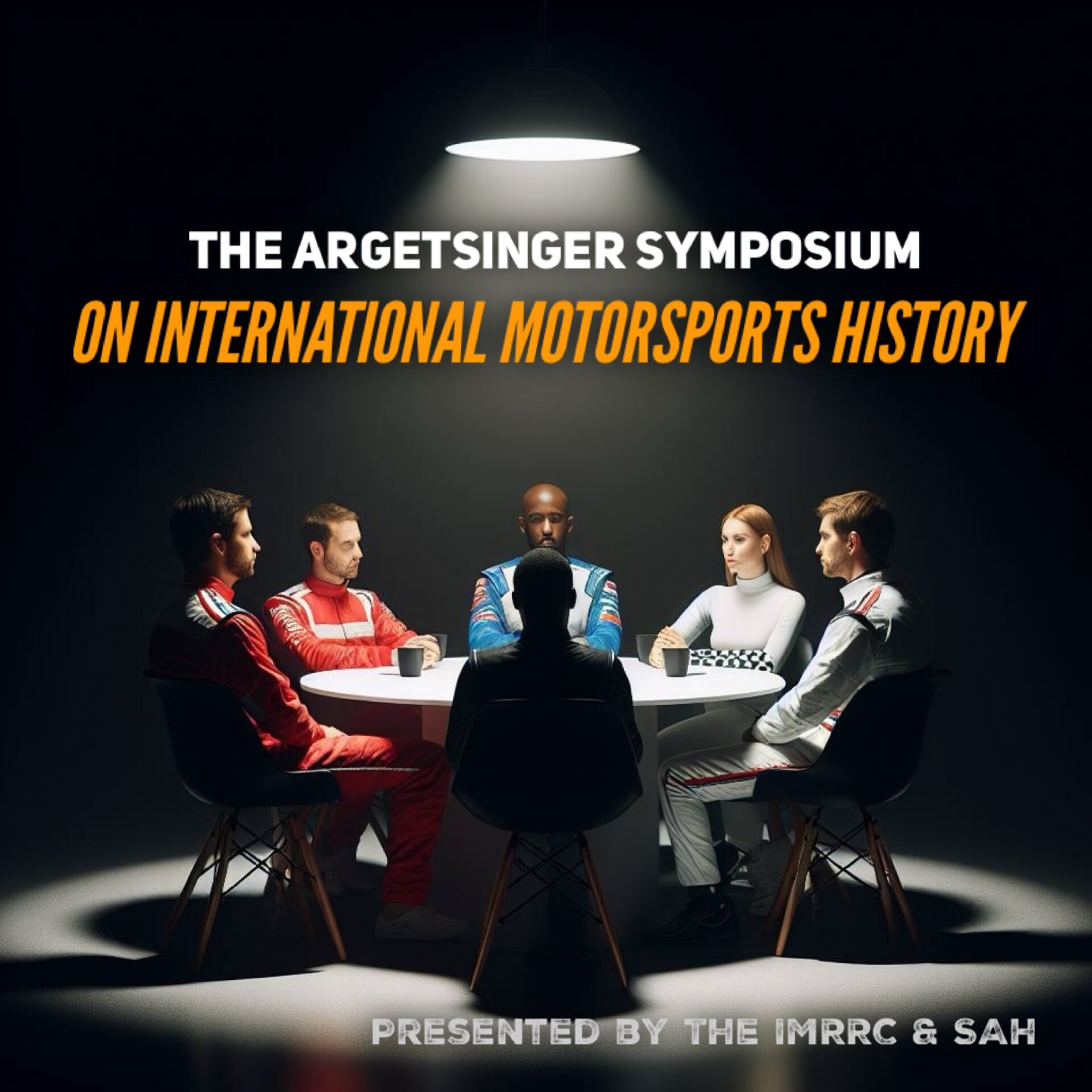 The International Motor Racing Research Center (IMRRC), partnering with the Society of Automotive Historians (SAH), presents the annual Michael R. Argetsinger Symposium on International Motor Racing History. The Symposium established itself as a unique and respected scholarly forum and has gained a growing audience of students and enthusiasts. It provides an opportunity for scholars, researchers and writers to present their work related to the history of automotive competition and the cultural impact of motor racing. Papers are presented by faculty members, graduate students and independent researchers.The history of international automotive competition falls within several realms, all of which are welcomed as topics for presentations, including, but not limited to: sports history, cultural studies, public history, political history, the history of technology, sports geography and gender studies, as well as archival studies.
The International Motor Racing Research Center (IMRRC), partnering with the Society of Automotive Historians (SAH), presents the annual Michael R. Argetsinger Symposium on International Motor Racing History. The Symposium established itself as a unique and respected scholarly forum and has gained a growing audience of students and enthusiasts. It provides an opportunity for scholars, researchers and writers to present their work related to the history of automotive competition and the cultural impact of motor racing. Papers are presented by faculty members, graduate students and independent researchers.The history of international automotive competition falls within several realms, all of which are welcomed as topics for presentations, including, but not limited to: sports history, cultural studies, public history, political history, the history of technology, sports geography and gender studies, as well as archival studies.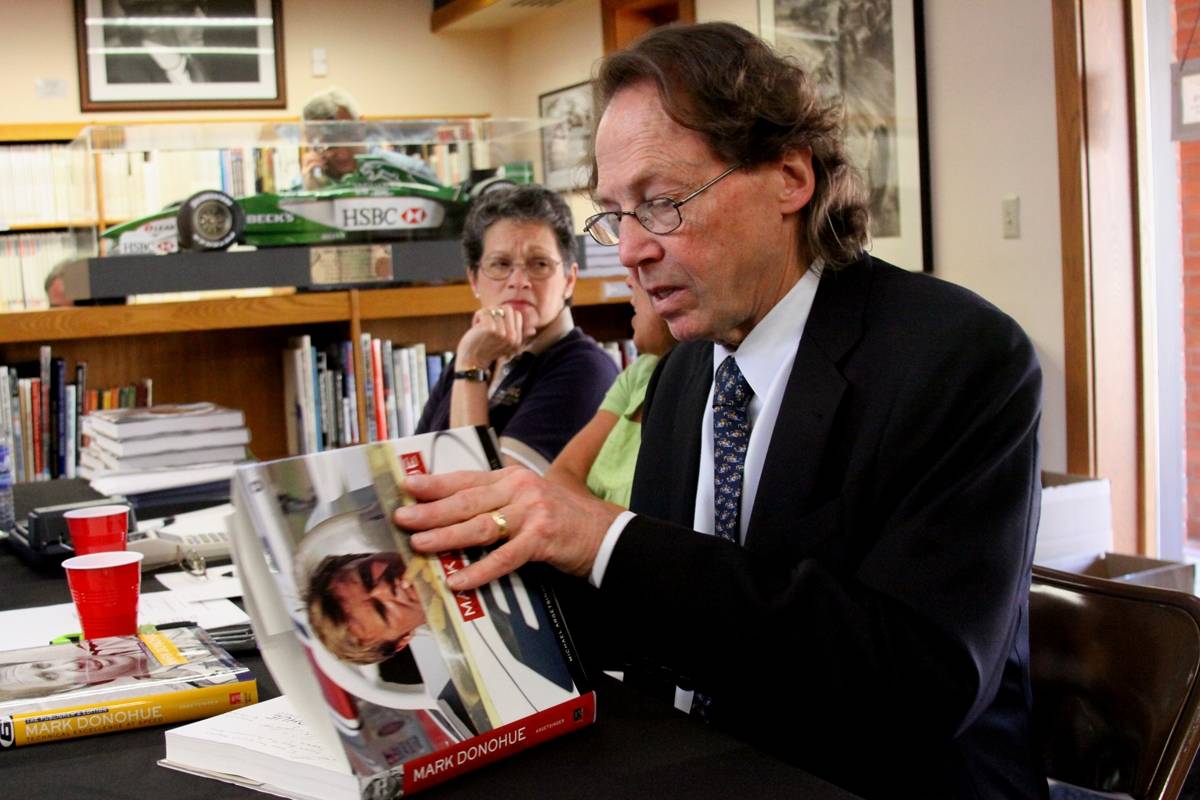 The symposium is named in honor of Michael R. Argetsinger (1944-2015), an award-winning motorsports author and longtime member of the Center's Governing Council. Michael's work on motorsports includes:
The symposium is named in honor of Michael R. Argetsinger (1944-2015), an award-winning motorsports author and longtime member of the Center's Governing Council. Michael's work on motorsports includes:- Walt Hansgen: His Life and the History of Post-war American Road Racing (2006)
- Mark Donohue: Technical Excellence at Speed (2009)
- Formula One at Watkins Glen: 20 Years of the United States Grand Prix, 1961-1980 (2011)
- An American Racer: Bobby Marshman and the Indianapolis 500 (2019)



























